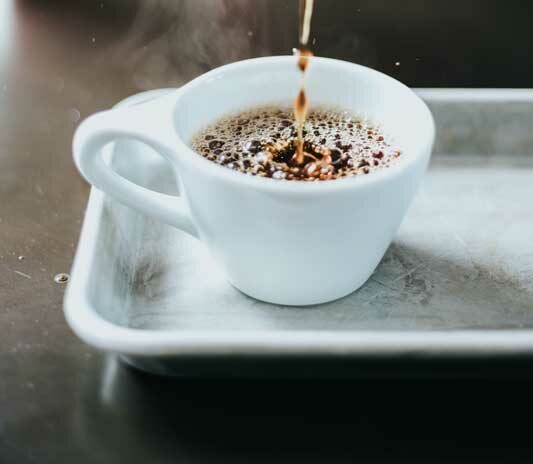When it comes to coffee, Sonoma County is blessed with a panoply of amazing local roasters and cafes.
But how much of what is tasted and smelled in coffee comes from the bean itself or from the roasting process? And what is the best way to preserve the quality and flavor of favorite ethically sourced, locally roasted coffee beans when they are used at home?
First, the flavor profiles and aromas of the coffee beans themselves are fruity, floral and vegetal. The roasting process changes these flavor profiles, adding more nutty, chocolate and other aromas as the roast level increases.
“A light roast is sort of like ‘unlocking the flavor of the bean.’ The fewer flavors contributed from the roasting process, the more pure flavor of the coffee,” says Thomas Chandler of Black Oak Coffee. “The darker you go, you’re going to eventually start roasting out some of the acid of the coffee and start getting more body in the coffee. This is when notes of chocolate start to develop. You’re also going to get more caramelization aspects, and as the roast gets darker, things will move from milk chocolate to bakers’ chocolate flavors and aromas.”
How does one make sure that justice is done to those amazing quality, organically grown, fair trade farmed beans? Here are a few tips gleaned from local coffee roasters:
Make sure to use a burr grinder to grind beans. A burr grinder is a type of grinder that has two plates with ridges that spin around so that the beans drop through a gap that they can only pass through if they are small enough. So coffee grind/particle is going to be more consistent. It is not an expensive or difficult to find grinder and is something one may already have. If unsure, check the box or look grinder details up online.
Don’t use boiling water to steep coffee. Let the water sit for about 10-15 seconds before pouring it over coffee. Water that is too hot pulls out more bitterness (alkaloids) from coffee.
Opt for the pour over method vs. using a French press, if possible. Why? There will be more control over the steep time with the pour over method, and one will get a much more even extraction than with a French press.
If one doesn’t have the right equipment for a pour over at home, or simply prefers to use a French press, roaster Julia Lancer from Avid Coffee recommends using a coarser grind level for French press than one would for pour over.
Recommended grind settings (if using a Burr grinder, which is preferable) for espresso, pour over and French press are as follows:
Espresso 1-5 (very fine)
Pour Over 6-10 (medium)
French Press/Cold Brew 11-15 (coarse)
Here are few great seasonal blends from local roasters to try at home:
Four Seasons, Bella Rosa Coffee Co.
This blend of Central and Southern American beans produces a complex coffee with a rich mouthfeel and notes of Mexican chocolate, vanilla, nutmeg and citrus. It’s the perfect blend for either espresso or drip coffee.
Redd: Winter, Black Oak Coffee Roasters
Offering notes of hazelnut, chocolate and warm baking spices, this light to medium roast espresso blend (to be used for either espresso or drip coffee) is both rich and complex.
Ice Breaker Seasonal Blend, Avid Coffee
With aromas and flavors of bittersweet chocolate, this toasty blend of Central American and African beans is the perfect coffee with which to warm up during winter months.












Wolf Coffee is roasted in Healdsburg and although there is no coffee shop, it is one of my favorites. It is available at Safeway, Olivers, Big Johns or on line. Their Wake Up Blend is smooth, no bitterness. Love it.